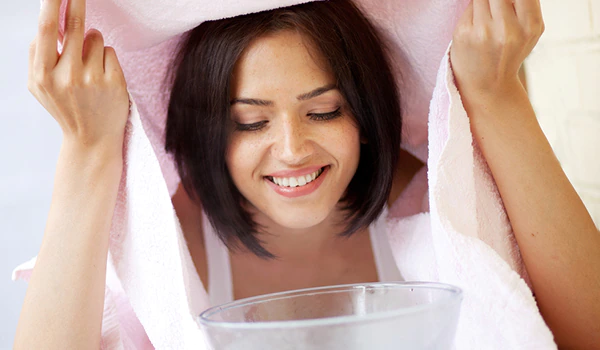9 tips to give yourself the best facial at home
Giving yourself a facial is one of life’s small pleasures. A plethora of skincare products and devices on the market make taking facial steps at home a breeze.
Nighttime is an excellent time to begin. Here’s how to get a facial for yourself. Beauty is personal, whether it’s a tried-and-true skincare regimen, how frequently you wash your hair, or the cosmetics you’re interested in.
Table of Contents
Cleanse

The idea is to start with a blank slate in order to maximize each step. If you’re wearing makeup, the general rule is to use a cleansing lotion or oil first. After which, to remove any remaining residue, cleanse with a lightly foaming gel or exfoliating cleanser.
Exfoliate

Exfoliating removes dead skin cells from the skin’s surface and ensures that the rest of the products you apply are properly absorbed.
Exfoliates are classified into several types:
• Physical exfoliates include facial scrubs, at-home micro-derma-abrasion tools, and derma-planning blades.
• Chemical exfoliates are acids, such as lactic or glycolic, that help dissolve dead skin cells.
Steam your skin

If you like facials, you’re probably aware that the majority of them involve some form of steam. Steaming your face tends to expand your pores and soften your skin’s top layer, getting ready for exfoliation. If you want to steam your face at home, be careful not to oversteam it, as this can cause dryness.
Exfoliate to smooth and brighten

Exfoliation is included in any good at-home facial (or facial in general) to remove dead skin cells and reveal radiant skin. Scrubs cause “micro-tears on the face.” Micro-tears are “tiny scratches” on the skin that can irritate it and cause breakouts.
Exfoliating with a peel, on the other hand, prepares the skin for the rest of your at-home facial. According to Chan, exfoliation helps open your pores and smooth the texture of your skin.
Massage in a mask

A facial wouldn’t be complete without a face mask. You may apply any mask you choose based on your skin’s needs, but it’s best to seek one with detoxifying elements to assist clear out your pores after exfoliating, as your pores will be open.
Massage your mask in for a few minutes rather than merely smoothing it on fast to make your at-home experience more spa-like.
Treat

Serums are excellent treatments for specific skin issues such as wrinkles and pigmentation. Active ingredients in serums include niacinamide, antioxidants, peptides, vitamins A, C, and E, and even topical retinol.
Moisturize skin

One of the most important factors in achieving a radiant glow is keeping your skin moisturized with a high-quality moisturizer. After removing the mask, apply your favorite serum or moisturizer to lock in the hydration. Laurencin suggests combining a few drops of your serum with a moisturizer to make your face feel less at home and more in-spa.
Massage

A little massage in your facial not only feels good but also helps to increase circulation and lymphatic drainage. This can leave you with a dewy, de-puffed complexion.
You may be hesitant to use an oil on top of your moisturizer if your skin is oily, but McCord recommends it “because it actually helps to balance out [you’re] sebum production.”
Use gentle soap

Harsh soaps, according to a plastic surgeon, are a no-no. “They can irritate your skin by removing its natural oils, which are essential for hydration.” Using harsh soaps can aggravate or flare-up any previous skin conditions, such as acne or rosaceous.
FAQs
Q. How frequently should you get a facial?
The general consensus among professionals is that a facial should be performed every three to four weeks or once a month, or generally once every 28 days. That is the length of your skin’s life cycle. Your skin cells regenerate every three or four weeks, thus facials should be done at least once a month to maintain healthy and bright skin.
Q. How long does the glow linger after a facial?
The instant glow that follows a facial normally lasts 48 to 72 hours. This is due to the fact that the skin is clean and well-hydrated. Furthermore, circulation has been increased as a result of the vigorous rubbing throughout the facial, allowing fresh blood to carry new nutrients to the skin.
Q. What skincare routine should I follow after having a facial?
It’s critical to stick to a strict skincare program after getting a facial to keep your shine. You should exfoliate your skin once a week at the absolute least. Every face wash should be followed by moisturizing and applying SPF. Cleansing and toning your face is a daily process that should be followed, especially if you use makeup. You should also avoid touching your face frequently since debris on your hands might enter your skin’s pores and produce acne.
Q. What are the advantages of a facial?
The Advantages of Getting Regular Facials
• Deeply cleanses the skin. Living in a major city exposes you to pollution, UV radiation, and the damage produced by environmental free radicals.
• Exfoliate. Exfoliation is the process by which dead skin cells are gently sloughed off the surface of your skin.
• Detoxifying.
• Stress reduction.
• Rejuvenation.
You may like also:




